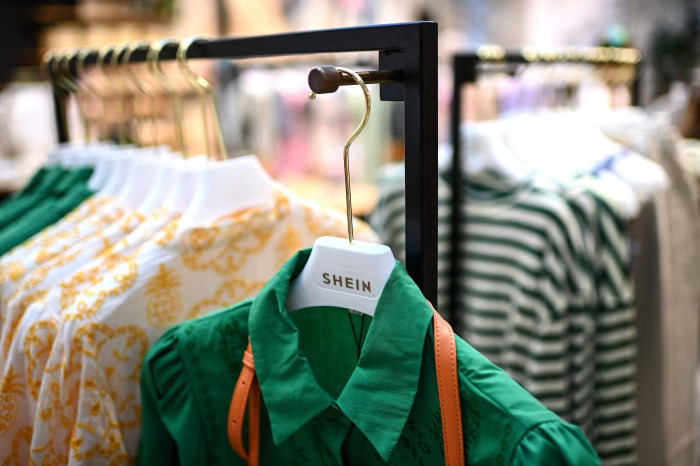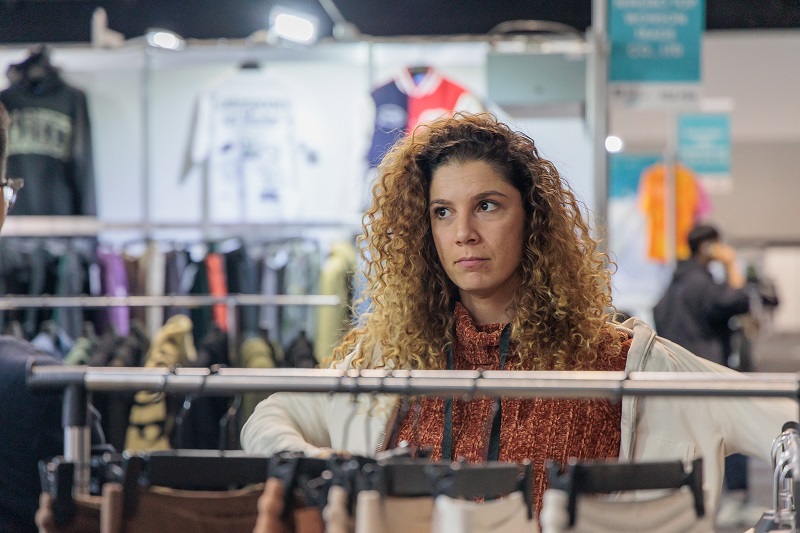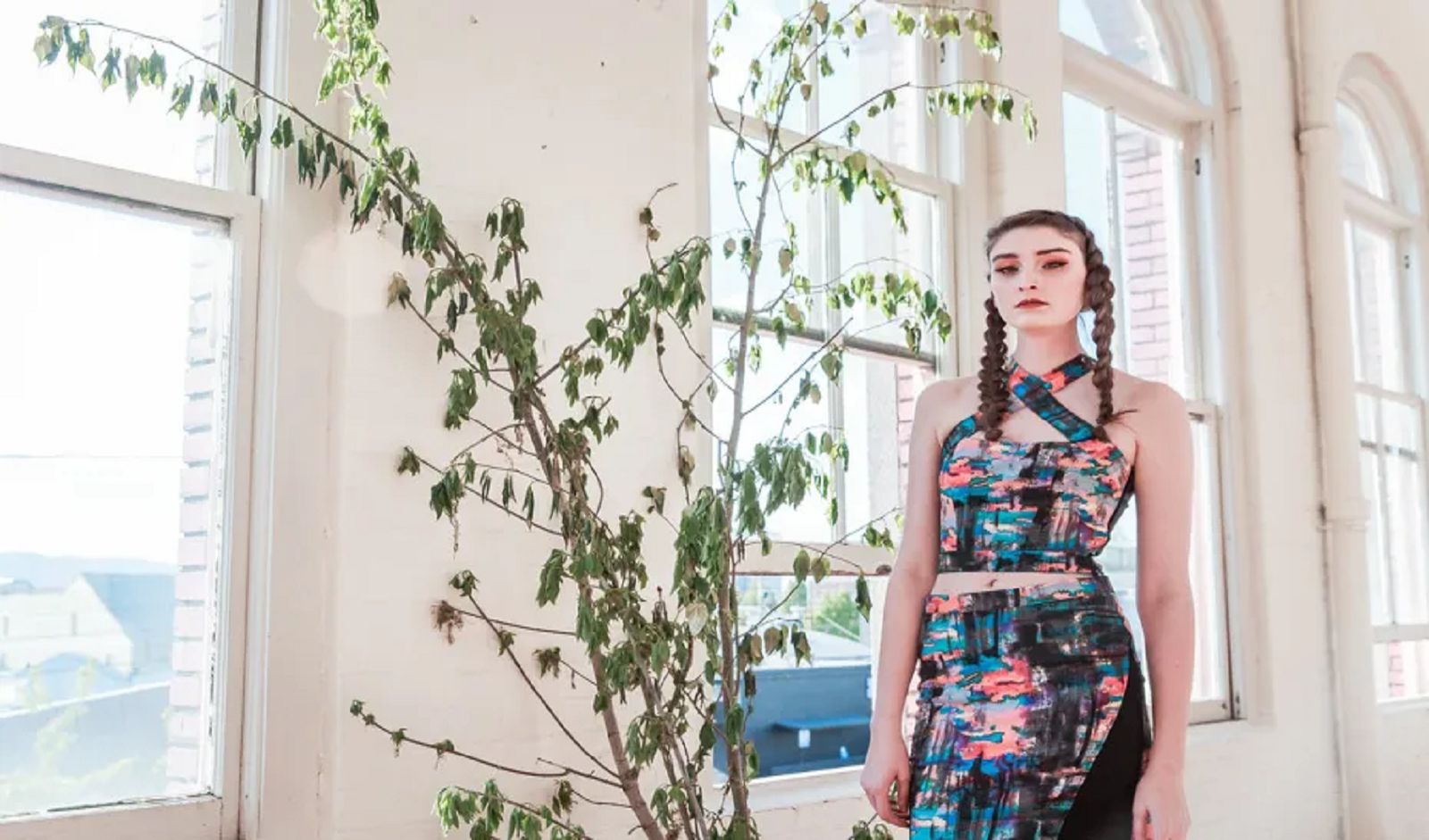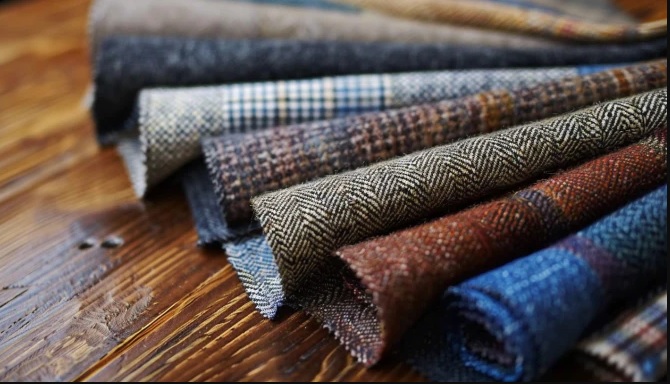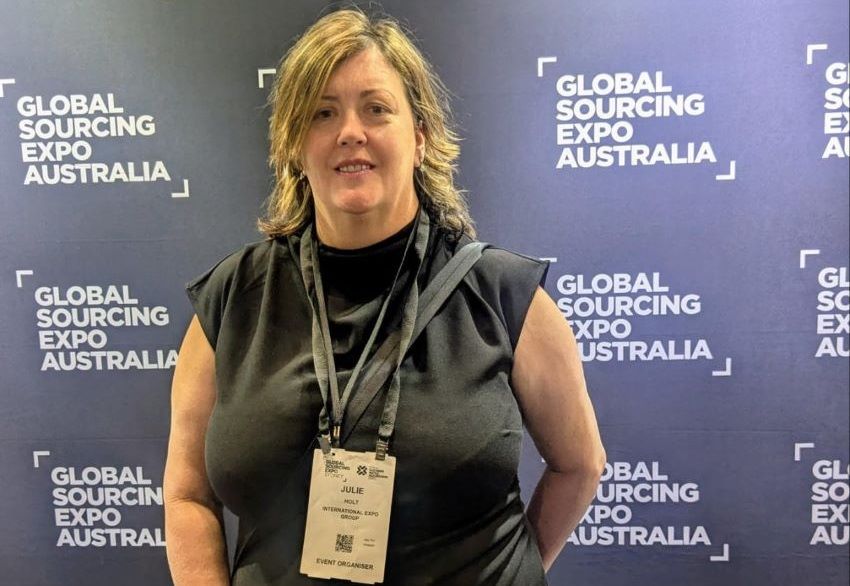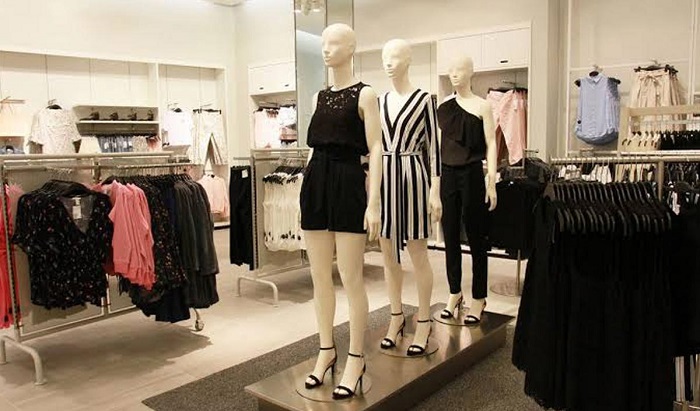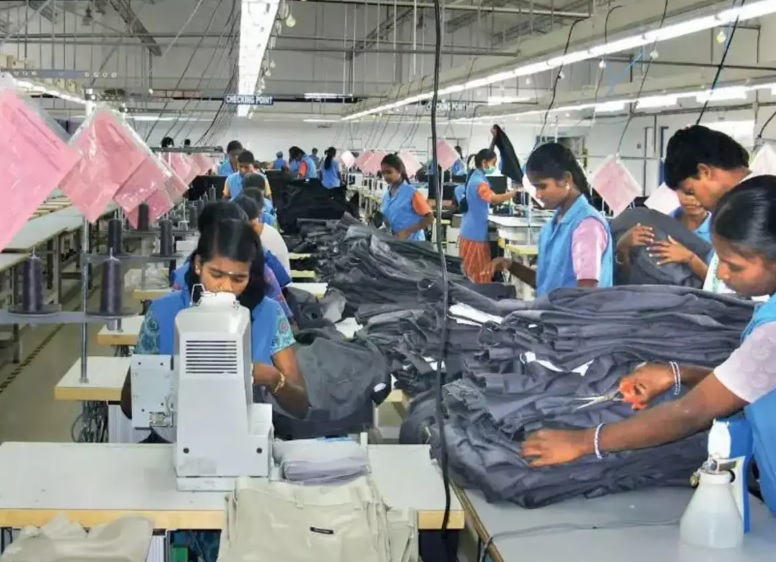FW
For the first quarter of this year Lululemon Athletica’s net revenue rose five per cent compared to the first quarter of last year. Lululemon Athletica is a Canadian athletic apparel retailer.
Total comparable sales decreased one per cent. Direct to consumer net revenue was flat. Gross profit was up seven per cent compared to the first quarter of fiscal 2016. Adjusted gross profit was up ten per cent from last year. Income from operations was down 21 per cent compared to the first quarter of fiscal 2016. Adjusted income from operations was up ten per cent.
The company will operate Ivivva, its active wear brand for girls, primarily as an e-commerce-focused business with a select number of stores in key communities across North America.
It plans to close approximately 40 of its 55 Ivivva stores and convert approximately half of the remaining stores to Lululemon branded stores. The retailer will also close all of its Ivivva branded showrooms and other temporary locations, and will streamline its corporate infrastructure.
The closures and restructuring may substantially be completed by the end of the third quarter of fiscal 2017. The company remains focused on owning its position as the global brand defining an active, mindful lifestyle.
Leading fashion brands are a part of Fashion Positive Plus. This collaboration works to accelerate the development of safer, circular materials for use in the apparel industry.
The members include H&M, Kering, Loomstate, Zero + Maria Cornejo and Eileen Fisher. They have begun the process of identifying building block materials, such as fibers, yarns, finishings, trims, and dyes that the group will collaboratively work to optimize for material health, safety and circularity.
The aim of Fashion Positive Plus is to convene some of the biggest brands and brightest design innovators in the world to collaborate on accelerating the optimization and availability of positive, circular building block materials for the fashion industry.
Plus will focus on driving the improvement of commonly used materials with the highest potential to positively impact human and environmental health and, in the process, catalyze systemic change for the fashion industry.
Fashion Positive Plus is a part of the Cradle to Cradle Products Innovation Institute. This institute is dedicated to advancing the verification of positive materials for the circular economy across many sectors from building materials and interior design finishes to packaging, personal care, household products, textiles and apparel.
Through Plus, it’s possible for brands to achieve a whole range of circular materials that they can put into the market within a very short time, including yarns, fabrics and trimmings.
"With exhibitors from 12 countries, four unique seminars and workshops, and a bigger ‘Trend Zone’ with a brand new ‘Information Exchange Zone’, the 6th edition of the BD Expo marked another leap forward. Highlighting the importance of developing business relationships and promoting best working practices, the 6th edition of Bangladesh Denim Expo was held on May 17 at the International Convention City Bashundhara, Dhaka."
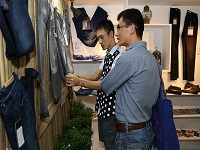
With exhibitors from 12 countries, four unique seminars and workshops, and a bigger ‘Trend Zone’ with a brand new ‘Information Exchange Zone’, the 6th edition of the BD Expo marked another leap forward. Highlighting the importance of developing business relationships and promoting best working practices, the 6th edition of Bangladesh Denim Expo was held on May 17 at the International Convention City Bashundhara, Dhaka. The theme of the two-day expo was ‘Denim Networks’, underlying the strategic importance for global market to strengthen long-term relationships and mutual approach, especially on innovation and sustainability.
Numbers speak growth
The sixth edition saw a total of 58 exhibitors from 12 countries – Bangladesh, Brazil, China, Germany, Hong Kong, India, Italy, Japan, Pakistan, San Marino, Spain and Turkey displaying their products and actively participating in the main theme of the show that registered over 5,545 visitors from 1,029 companies and 52 countries as well, confirming the constant growth in audience numbers since the beginning. Starting with 10,000 online registered visitors, the organisers expressed their satisfaction for having attracted a bigger crowd than expected, considering the usual gap. In this edition, a total of four informative seminars and workshops on trends, innovation and new technologies, global denim market and quality assurance were also held.
Informative seminars
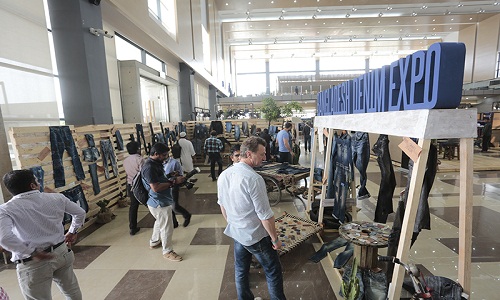
Themed, ‘From ideas to technologies: discovering a new age for garment finishing’, the seminar focussed on new trends in finishing, embracing cultural, economic and technical considerations. ‘A/W 2018/19 Trend Seminar by WGSN’, an extensive presentation by the specialists from the renowned trend forecaster WGSN, covered the mood board, key looks and silhouettes for women and men, color, fit, construction, wash and trim direction identified for four main mega trends. At the ‘Garmon SPA Seminar’, Marco Nava, Global Sales Director, Garmon Chemicals, unveiled the sustainability-oriented approach of Garmon Chemicals. They are the advanced chemical supplier for apparel world that provides worldwide fashion players with solutions that give wearers exactly what they ask for – garments enhanced by modern and beautiful fashion treatments that are safe for them and for the planet.
In another seminar, ‘Total quality assurance olistic approach for business excellence’ Karthik ND, Country Managing Director, Intertek, shared thoughts on holistic approach for business excellence with the opportunity for direct interaction with the expert. WGSN held trend forecast and workshop all-day their dedicated booth in Hall 4 mezzanine in the Trend zone area.
Trend zone a hit
At the ‘Trend Zone’, an unique space dedicated to showcase latest denim trends and innovative products, visitors were able to gain insights on denim fabrics, styling and finishing available in Bangladesh, together with an offer of the most relevant denim publication. The 6th edition featured several special event-displays that captured the attention of all denim lovers. Amongst them: ‘Tonello Denim Gallery’, Selfie Booth by Sportswear Magazine and Trend Zone were the most attractive.
Sustainability on the agenda
A-not-to-be-missed appointment during the event was the Sustainable Apparel Forum (SAF), organised by Bangladesh Apparel Exchange (BAE), under the theme ‘Mmaking sustainability easier’. Through four unique knowledge sessions, the forum explored several key issues aimed at making sustainability easier to implement by factories and individuals. Topics such as ‘saving water, resources & cost – The must-knows for your factories’; ‘energy efficiency – how to optimise energy consumption and reduce cost’; ‘green factories’; and ‘sustainable financing’ were brought to light for attendees.
Tianhai Athleisure (TAS) is launches its website showcasing latest developments and innovative collection recently at Performance days at Munich. Exciting themes and collections, such as Dentelles Sportif , Mesh Fash , Mint Collection, Non Olet (Odor management ), Zone Tech ( Different Power Zones) and many more were presented to interested visitors.
A complete range of innovation has been prepared with fabrics made out sustainable fibers, cool and warm wool, silk enhanced or climate management as well as new fabric patterning and design concepts.
Tianhai Athleisure Solutions (TAS) is a new division of the leading Chinese lace manufacturer Tianhai Lace. Its key platform is innovative Fabric and Design-to-Garment solutions that open up new possibilities to athleisure and sportswear brands. With its vast array of lace, rascheltronic and circular knitting machines, the company offers all kinds of motifs, mesh, jacquard knits and much more made to the specifications of its users. The new division is targeting the growing athleisure market as well as fitness, running and related activities.
For the end consumersif the central government implements 12 per cent GST on fabrics made of MMF and 18 per cent on branded textiles, the cheapest sari sold at Rs 200 will become costlier by Rs 95. About 40 percent of the production of saris and dress material is done targeting mainly the poor and lower middle class consumers and major part of the production of saris and dress material is supplied throughout the country.
If the central government implements 12 percent GST on fabrics made of MMF and 18 percent on branded textiles, the cheapest sari sold at Rs 200 will become costlier by Rs 95 for the end consumers.
At present, the MMF centre in the city manufactures around four crore metres of fabric per day on more than 6.5 lakh powerlooms. There are around 165 textile markets housing over 65,000 wholesale textile shops, having daily turnover exceeding Rs 120 crore.
Industry experts says that an average of one kilogram of yarn can manufacture three saris of 5.50 metres each, which are sold not less than 200 per sari. The higher range of saris cost more than Rs 1,000 and beyond, which generally has value addition in the form of embroidery, etc.
At present, the cenvat, excise duty at 12.50 percent and 5 percent and VAT put together on one kilogram of yarn comes to around Rs 16.31 and tax forgone on dyes and chemicals comes to around Rs 7.42. However, the total tax on fabric and yarn comes at Rs 23.73 per kg.
The government shall get maximum revenue in the new GST regime than the present level of revenue incase if the government fixes uniform GST of 5 percent on the entire textile value chain then the GST revenue on one kilogram of fabric and saris would be Rs 30. Thus,.
The wholesale sari valued at Rs 200 will attract GST of Rs 95 and it will be passed to the end consumer, making the cheapest sari costlier only if the GST slab of 12 percent on fabrics and 18 percent on branded textile is fixed.
By 2025 Marks & Spencer hopes to support 1000 communities and help ten million people live happier, healthier lives. The ten communities the British multinational retailer is currently in discussions with are in the UK.
M&S will work with local councils and charity partners to support communities to deliver positive, measurable change. It will initially be piloted in ten communities over the next two years, when the retailer will try out a range of actions designed to tackle the issues that matter most to communities – such as unemployment, skill shortages, loneliness, poverty, and mental health and wellbeing. Successful initiatives will be rolled out to a further 100 locations by 2023 and learnings will be shared with 1,000 locations by 2025.
Marks & Spencer has been at the forefront of social change for 133 years and is determined to play a leading role in the years ahead by taking positive action to enable customers and communities to live happier, healthier lifestyles. Another of Marks & Spencer’s aims is to be a zero waste business.
Marks & Spencer has 268 franchise stores in 34 markets and an established joint venture in Greece as well as India. It also trades online in 21 markets reaching customers through its fully localised owned and operated websites via established marketplaces.
India wants textile and garment exports to reach 45 billion dollars in 2017-18.The country is faceing falling demand in major markets such as the US, EU and China, and stiff competition from countries like Vietnam and Bangladesh.
A support package will be unveiled for the knitwear sector, which is grappling with enormous financial stress due to lack of automation, leading to much lower productivity than in countries like China.
Road shows have been held in six countries including the UK, US, China, Russia, South Korea and the UAE to attract investors. Events have been planned to showcase India as a global sourcing hub and provide a platform to connect and collaborate with global manufacturers, investors and buyers in the textile sector.
Funds to the tune of over Rs 1900 crores have been given to the apparel industry under the rebate of state levies to boost exports from the sector.
Under the Pradhan Mantri Paridhan Rozgar Protsahan Yojana, over 1.4 lakh workers have registered themselves for provident fund.
Around Rs 3000 crores have been approved as additional investment in the apparel segment, which will generate more employment in the entire sector.
A Rs 6,006 crore special package for the textile and apparel sector aims to create one crore jobs in three years.
On 19 May 2017 the European Union re-granted Generalized Scheme of Preferences Plus (GSP+) for Sri Lanka. As compared to before EU GSP+ status will now help Sri Lanka’s economy develop and create more and better jobs for its people.
On the other hand, Bangladeshi apparel makers now would face another competition from Sri Lankan companies and the value added market segment will definitely feel a pressure now. Due to GSP+ in Sri Lanka the company is always cross checking price with Sri Lanka.
The EU introduced GSP+ with the aim of providing more extensive market access than the standard GSP scheme, giving beneficiary countries duty free access to EU markets for over 7200 products. Sri Lanka will be benefitted from the full removal of tariffs on Sri Lankan imports into the EU on 66 per cent of tariff lines covering a wide array of products including textiles, small machinery, and fisheries.
GSP-Plus concessions were initially granted to Sri Lanka in 2005, after the Tsunami. However, in 2010, the EU withdrew Sri Lanka’s preferential access under GSP-Plus to the European market due to the government’s failures in adhering to human rights standards set under the provisions of the scheme.
Contrastingly, during the 2010-15 period, Sri Lankan exports to the EU grew by a mere 1.02 per cent compared to previous years. The most direct impact was tariffs being reinstated on Sri Lankan imports to the EU, making them uncompetitive compared to similar imports from other developing economies.Compared to the larger firms. The impact was severe on medium sized apparel producers, because they did not possess the technical and financial resources to adequately diversify their export portfolio.As a result a significant volume of both domestic and foreign investment relocated to these countries looking for preferential access to the EU market.
The EU is Sri Lanka’s second-largest trading partner after India but its main export destination, absorbing 31 per cent of Sri Lankan exports in 2015. At present under the new trade concessions granted under the GSP+ for Sri Lanka would undoubtedly result in boosting the economic prosperity of the country.
Bangladesh’s clothing exports to the US declined by around six per cent during the first quarter of the current calendar year. At the same time, US imports of clothing from the rest of the world declined by around two per cent. Garment items account for 95 per cent of the goods exported from Bangladesh to the US market.
Among the top ten exporters of clothing to the US, exports from Vietnam registered a robust 7.21 per cent growth. Export from Mexico, Nicaragua and El Salvador also registered moderate growth. On the other hand, exports from China, India, Indonesia, Honduras and Cambodia declined along with those from Bangladesh.
China is the largest source of US apparel imports. Vietnam is in the second place followed by Bangladesh.
There is a change in the attitude of US consumers, who now prefer spending more on electronic gadgets compared to clothes. The US election has also impacted retail sales negatively. Global apparel exports to the US declined 6.44 per cent year-on-year in 2016.
All nine out of ten top apparel exporting nations of the world experienced negative growth in shipment to the US in 2016. Only Vietnam's apparel exports increased 0.30 per cent year-on-year in 2016.
"Clariant and Huntsman Corporation have merged together to form a company called Huntsman Clariant. On a pro forma 2016 basis, the combination of both companies will create a leading global specialty chemical company with sales of approximately 13.2 billion dollars, an adjusted EBITDA of 2.3 billion dollars and a combined enterprise value of approximately 20 billion dollars."

Clariant and Huntsman Corporation have merged together to form a company called Huntsman Clariant. On a pro forma 2016 basis, the combination of both companies will create a leading global specialty chemical company with sales of approximately 13.2 billion dollars, an adjusted EBITDA of 2.3 billion dollars and a combined enterprise value of approximately 20 billion dollars.
The combined entity will benefit from each other’s strengths. It will have a significantly improved growth profile in highly attractive end markets and geographies. Huntsman Clariant will leverage shared knowledge in sustainability and boast a much stronger joint innovation platform. This will enable the development of new products in order to deliver superior returns and drive shareholder value.
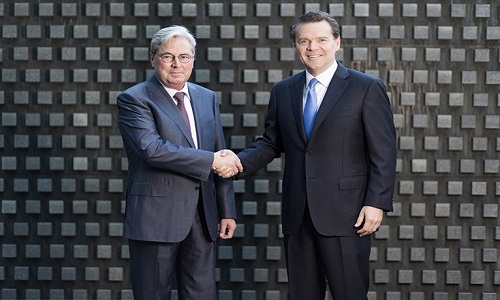
Clariant and Huntsman are joining forces to gain a much broader global reach, create more sustained innovation power and achieve new growth opportunities.
The combined company is incorporated in Switzerland and will be governed by a board of directors with equal representation from Clariant and Huntsman .The new company will accelerate value creation for shareholders through a more robust combination of technology, products and talent. The combined company expects to realize more than 3.5 billion dollars of value creation from approximately 400 million dollars in annual cost synergies.
The full synergy run-rate will be achieved within two years of closing. These synergies will be realized by reducing operational costs and improving procurement. The targeted synergies represent roughly three per cent of the total combined 2016 revenue. There will also be additional cash-tax savings.
The expectation is of enhanced returns from the improved growth profile in highly attractive end markets and key geographies such as the United States and China. The merger presents opportunities for stronger joint innovation platforms and shared knowledge in sustainability. What the merged entity looks forward to is a stronger balance sheet and cash flow generation. The plan is to continue Clariant’s attractive dividend policy.
The transaction is targeted to close by year end 2017.

